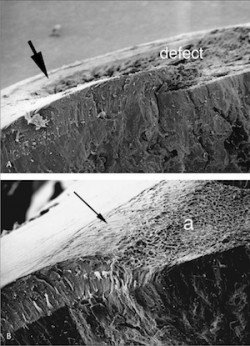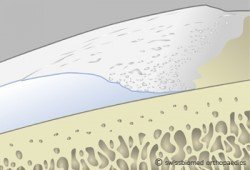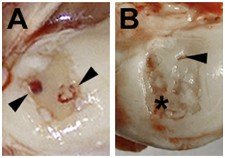Biological and Mechanical Aspects of Cartilage Healing
Although the surgical treatments mentioned above have been applied for several years, the clinical outcome of these particular procedures is still controversial. There have been over 4’000 citations in MEDLINE on “Cartilage Repair in Humans”, but as of today, only a few good, high quality studies available. The scientific base for decisions in regards to cartilage surgical treatment is therefore very limited. Therefore we should be cautious when making statements on treatment efficacy of one particular procedure.
The problems the surgeons are trying to solve:
- Cartilage lesions grade III/IV, >2cm²
- Trauma or degenerative (OCD)
- Posttraumatic OA
- Regenerate hyaline-like cartilage.
Besides the fact that only few high quality clinical studies are available, all these surgical approaches have to follow some basic biologic and biomechanical rules which are discussed as follows:
Why is the cartilage defect filling so important?
The failure of cartilage healing is usually explained on a biological basis, that is, the inability of local chondrocytes to proliferate and build a sound new tissue.
Orthopedic surgeons performing arthroscopies are well aware of cartilage defect morphology, indicating flattening and folding of the articular cartilage at the defect edges Fig. 1)
|
Fig 1 |
|
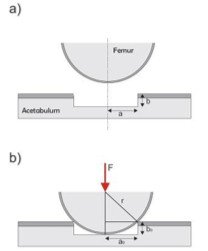 Any tissue growing or surgically implanted in the defect is postoperatively subject to loading and displacement, therefore complicating attempts to heal. Deformation of cartilage at the defect edge suggests high compressive load concentration and/or loss of its normal ability to resist it (Fig.2). These observations do correlate with the development of local degeneration of the articular cartilage
Any tissue growing or surgically implanted in the defect is postoperatively subject to loading and displacement, therefore complicating attempts to heal. Deformation of cartilage at the defect edge suggests high compressive load concentration and/or loss of its normal ability to resist it (Fig.2). These observations do correlate with the development of local degeneration of the articular cartilage
A simple mechanical model representing opposite joint surfaces with a cartilage defect on one side (Fig. 3 a,b) demonstrates high compressive load concentrations at the defect edges as shown in a Finite Element animation (Animation file)
In pure microfracturing approach, preclinical and clinical studies indicate that the regenerated tissue is often fibrotic and therefore mechanically incompetent to prevent high loading and strain at the edges of the articular defect. Therefore it may not prevent killing the tissue or cells repopulating the defect or its physical displacement during the regeneration phase.
|
28 (2007), 5570-5580 (PDF) |
The risk of displacing the scaffold or matrix postoperatively can be prevented by long no-weight bearing rehab programs (e.g. 8 weeks no weight bearing, Steadman et al.), including passive motion regime, but consequently this may on the other hand compromise the remodeling process of the new cartilage tissue.
It is obvious that the size, depth and location of the cartilage defect will have a significant influence on grade and speed of the destructive effects on this “cartilage erosion”.
The mechanical quality of tissue formed around the edges of articular cartilage defects can be improved by filling the defect with matrices or scaffolds which may prevent the deformation along the edges of the lesion as well as of the opposing surface and protect a space (“a biological chamber”) where new tissue can grow.
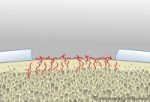 |
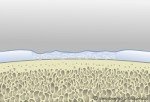 |
microfracture without protection → fibrotic tissue
|
|
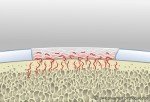 |
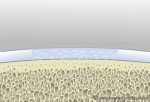 |
microfracture with ACS protection → hyaline like tissue

